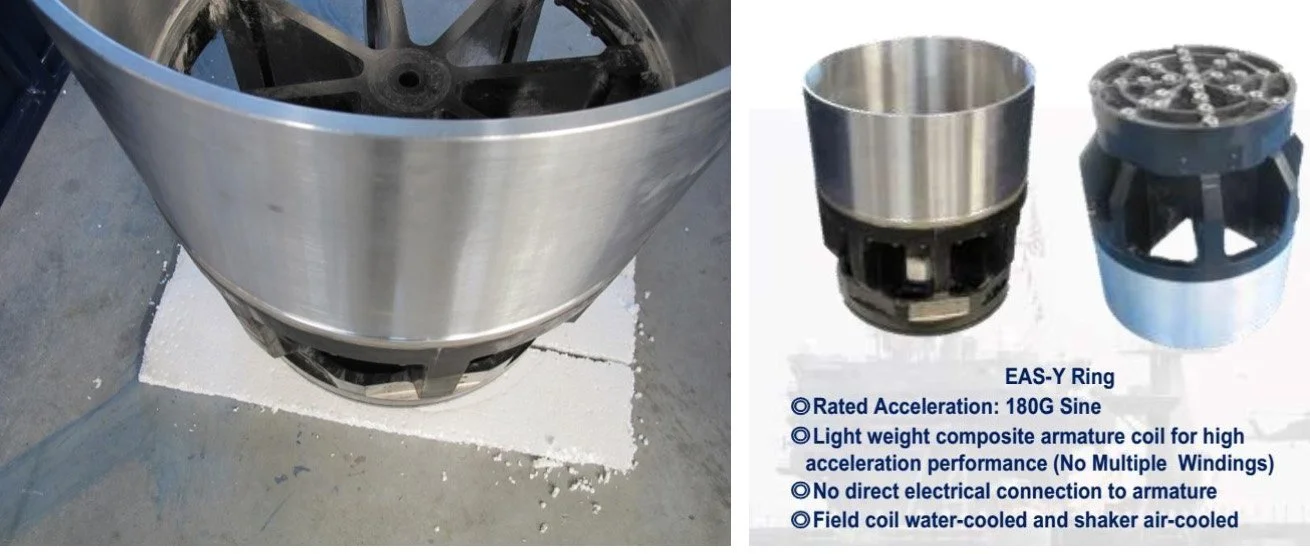Revolutionizing Vibration Testing with ETS “I” Series System
Vibration testing is a critical component of product development across various industries, from aerospace to automotive, ensuring the durability and reliability of products subjected to real-world conditions. However, the efficacy of vibration testing systems can be hindered by inherent limitations in their design and functionality. Let's delve into some of these constraints, particularly concerning high-force direct-coupled armature systems.
1. Structural Integrity Challenges: Most high-force direct-coupled armature systems rely on intricate constructions comprising electrical windings, epoxy-bonded joints, high-amperage flexures, and cooling mechanisms. While these components facilitate efficient operation, they are susceptible to fatigue failures, water leaks, epoxy joint fractures, and winding burnouts when exposed to prolonged high-level vibrations. The repetitive stress applied during testing exacerbates these vulnerabilities, leading to potential system breakdowns and compromised test results.
2. Lower Guidance Limitations: The lower guidance mechanism in vibration testing systems is crucial for maintaining stability and controlling the center of gravity (CG) of test articles. However, conventional designs, typically featuring rollers or shaft housings with small ball bearing assemblies, face limitations when dealing with high-force applications (>70kN). Larger test articles with significant mass pose challenges in CG control, resulting in heightened overturning moments that exert excessive stress on the ball bearing assembly. In severe cases, these stressors can lead to catastrophic failures, damaging both the armature and stator coil, thereby jeopardizing the integrity of the entire testing system.
3. Bearing Capacity and Reliability: Addressing the shortcomings of conventional lower guidance mechanisms, some advanced vibration testing systems integrate hydrostatic bearings, such as those found in the I series shaker systems. These bearings boast impressive load-bearing capacities, capable of withstanding up to 9000Nm of side loading. By leveraging superior bearing designs, these systems enhance test capabilities and bolster overall reliability, mitigating the risks associated with excessive stress and potential system failures.
Revolutionizing Vibration Testing with ETS “I” Series System
In the realm of vibration testing, where precision and reliability are paramount, the ETS “I” Series stands out as a beacon of innovation and excellence. Engineered to meet stringent military and international standards, including MIL, ASTM, IEC, ISO, BS, and JIS, the “I” Series caters to diverse industries, from electronics and automotive to aviation and avionics.
At the heart of this cutting-edge system lies the Extreme Acceleration Shaker Y-Ring (EAS-Y Ring) armature—a revolutionary design poised to redefine the landscape of vibration testing. Let’s explore the groundbreaking features of this remarkable technology and its implications for the industry.
I Series Vibration System
Solid Armature EAS-Y Ring
Unveiling the EAS-Y Ring Armature:
The EAS-Y Ring armature represents the pinnacle of shaker design innovation, setting a new benchmark for performance and reliability. Its solid metallic construction simplifies electrical interconnections and power supply, streamlining operations and enhancing efficiency. Unlike traditional armature coil winding designs, the EAS-Y Ring armature boasts unparalleled mechanical durability, ensuring prolonged service life and minimal downtime.
Key Features and Benefits:
Enhanced Durability: The solid metallic construction of the EAS-Y Ring armature guarantees superior mechanical durability, capable of withstanding the rigors of prolonged testing cycles without succumbing to fatigue or wear.
Simplified Operation: By eliminating the complexities associated with traditional armature coil winding designs, the EAS-Y Ring armature streamlines electrical interconnections and power supply, reducing setup time and enhancing overall operational efficiency.
High Performance: The advanced design of the EAS-Y Ring armature translates into exceptional performance, characterized by optimal vibration transmissibility ratios and superior reliability, ensuring accurate and consistent test results across a wide range of applications.
Versatility and Adaptability:
Beyond its core attributes, the ETS “I” Series system offers unparalleled versatility, catering to a diverse array of testing requirements. Whether it's transportation vibration, simulation, combined vibration-climatic tests, or seismic simulations for small-sized components, the “I” Series seamlessly adapts to varying test scenarios, delivering reliable and precise results with unmatched efficiency.
Conclusion:
In a landscape defined by relentless innovation and ever-evolving standards, the ETS “I” Series system emerges as a beacon of excellence, revolutionizing vibration testing with its groundbreaking EAS-Y Ring armature technology. With its unrivaled durability, simplified operation, and unmatched performance, the “I” Series sets a new standard for reliability and precision in the realm of vibration testing, empowering industries to push the boundaries of innovation with confidence and assurance.





